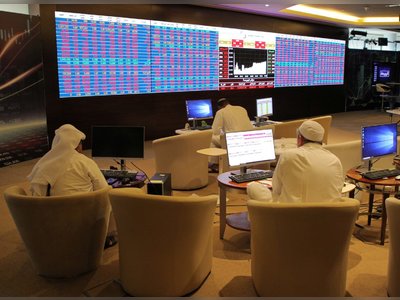Global Economic Outlook: Rising Inflation and Supply Chain Disruptions
Major economies face challenges including inflation spikes and ongoing supply chain issues impacting recovery post-pandemic.
As major economies worldwide continue to grapple with the aftermath of the COVID-19 pandemic, a significant rise in inflation rates has emerged as a critical concern.
In the United States, the Labor Department reported an annual inflation rate of 8.6% for May 2022, marking the highest level in four decades.
Similar trends have been observed in Europe, where several economies reported year-on-year inflation rates exceeding 7%, driven by increased energy prices and supply chain disruptions.
The inflationary pressures are exacerbated by ongoing supply chain challenges that have persisted since the onset of the pandemic.
Factors such as port congestion, labor shortages, and heightened consumer demand have contributed to delays in the delivery of goods.
This has prompted many businesses to raise prices, further fueling inflation.
The International Monetary Fund (IMF) has noted that these supply chain bottlenecks are likely to persist, complicating efforts of central banks to manage monetary policy.
Central banks in response have begun to signal shifts in monetary policy.
The U.S. Federal Reserve implemented a series of interest rate hikes, with the federal funds rate raised by 0.75 percentage points in June 2022, the largest increase since 1994. This approach aims to combat rising prices while balancing the risk of suppressing economic growth.
The European Central Bank has also outlined a plan to end its asset purchase program and indicated a potential interest rate increase in the coming months.
Compounding these issues, geopolitical tensions have further destabilized energy markets.
The conflict in Ukraine has led to significant disruptions in energy supplies, especially natural gas, affecting countries relying on imports.
Following sanctions on Russian energy exports, European nations are accelerating efforts to diversify their energy sources, including increased liquefied natural gas (LNG) imports.
Additionally, Central Banks are monitoring the labor markets closely, where a tight labor supply has prompted wage growth.
In many regions, the tightening labor market is adding to inflationary pressures, as companies compete for employees with increasing wages.
For example, the U.S. experienced a monthly job creation rate of 390,000 in May while maintaining an unemployment rate of 3.6%.
The implications of rising inflation and supply chain disruptions are significant for global economic recovery.
Consumer spending, a critical driver of growth, is showing signs of strain as households face higher prices for essentials, including food and energy.
The World Bank has revised its global growth forecast, anticipating a slowdown in economic expansion as higher prices impact consumer behavior.
In summary, the interplay of rising inflation rates, disrupted supply chains, and geopolitical tensions presents substantial challenges for economies worldwide as they strive to recover from the pandemic's impacts.
In the United States, the Labor Department reported an annual inflation rate of 8.6% for May 2022, marking the highest level in four decades.
Similar trends have been observed in Europe, where several economies reported year-on-year inflation rates exceeding 7%, driven by increased energy prices and supply chain disruptions.
The inflationary pressures are exacerbated by ongoing supply chain challenges that have persisted since the onset of the pandemic.
Factors such as port congestion, labor shortages, and heightened consumer demand have contributed to delays in the delivery of goods.
This has prompted many businesses to raise prices, further fueling inflation.
The International Monetary Fund (IMF) has noted that these supply chain bottlenecks are likely to persist, complicating efforts of central banks to manage monetary policy.
Central banks in response have begun to signal shifts in monetary policy.
The U.S. Federal Reserve implemented a series of interest rate hikes, with the federal funds rate raised by 0.75 percentage points in June 2022, the largest increase since 1994. This approach aims to combat rising prices while balancing the risk of suppressing economic growth.
The European Central Bank has also outlined a plan to end its asset purchase program and indicated a potential interest rate increase in the coming months.
Compounding these issues, geopolitical tensions have further destabilized energy markets.
The conflict in Ukraine has led to significant disruptions in energy supplies, especially natural gas, affecting countries relying on imports.
Following sanctions on Russian energy exports, European nations are accelerating efforts to diversify their energy sources, including increased liquefied natural gas (LNG) imports.
Additionally, Central Banks are monitoring the labor markets closely, where a tight labor supply has prompted wage growth.
In many regions, the tightening labor market is adding to inflationary pressures, as companies compete for employees with increasing wages.
For example, the U.S. experienced a monthly job creation rate of 390,000 in May while maintaining an unemployment rate of 3.6%.
The implications of rising inflation and supply chain disruptions are significant for global economic recovery.
Consumer spending, a critical driver of growth, is showing signs of strain as households face higher prices for essentials, including food and energy.
The World Bank has revised its global growth forecast, anticipating a slowdown in economic expansion as higher prices impact consumer behavior.
In summary, the interplay of rising inflation rates, disrupted supply chains, and geopolitical tensions presents substantial challenges for economies worldwide as they strive to recover from the pandemic's impacts.











